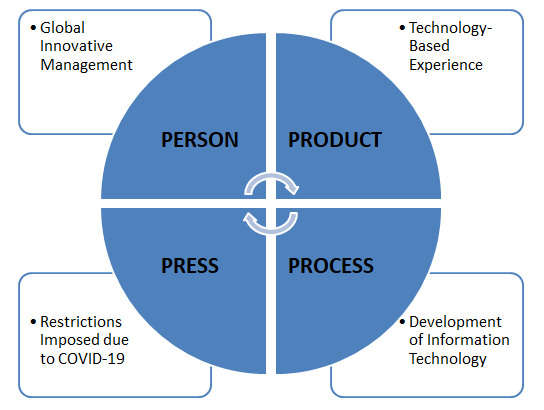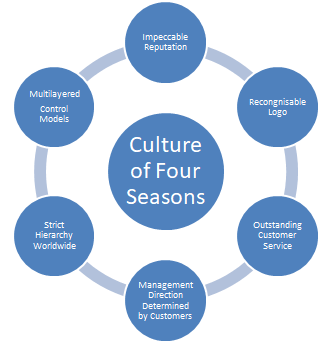Impact of COVID-19 on the SPA Industry
The SPA industry, along with the overall hospitality sector, has suffered from the restrictions imposed following the Covid-19 outbreak. Accordingly, the sector has to rearrange its activities in order to adjust to the new reality (Navarette and Shaw, 2020). The pandemic poses a range of challenges, to which organizations must respond effectively.
The Four Seasons SPA has been affected by the same negative factors its global counterparts have. Centorrino (2020) states that the world has faced unprecedented challenges due to the pandemic. The SPA industry has been placed under particular restrictions, as their role is not deemed as essential, while it creates favourable conditions for the transmission of the virus. For example, Han (2020) investigates a major COVID outbreak, which began at a local SPA facility. Four Seasons venues are located globally, but international travel has been experiencing extraordinary restrictions, following worldwide travel bans.
Kitamura et al. (2020) refer to the example of the Japanese tourism sector, which has seen a 93-per cent decrease in foreign visitors. In order to respond to the new challenges, Four Seasons had to reorient its activities, focusing on its unique online shop of quality linens and bedding (“Four Seasons at Home,” n.d.) This way, the company offers remote services to its guests while adjusting to the new pandemic-determined reality.
Analysis
While the COVID-19 pandemic has entailed major challenges for the industry, new development opportunities emerge. In fact, the companies, which manage to utilise the innovation potential created by the restrictions and the growing importance of the online environment, can achieve substantial success. In the modern business environment, innovation is determined by four P’s, which are Person, Product, Process, and Press (Figure 1).
In the case of Four Seasons, the company’s management represents the Person aspect. Smith and Wallace (2020) emphasise the importance of positive employee experience in the SPA industry, as people must remain motivated to develop a new product in such challenging times. Accordingly, the product of innovation will be the unique, technologically advanced experience for the customer of Four Seasons. The Press aspect concerns the business environment, which is currently determined by the pandemic and its lasting consequences. Finally, the process of innovation reflects the spirit of the product, comprising new IT solutions.

Developing a comprehensive cultural web will be another important point in analysing the prospects of Four Seasons in the era of COVID-19. The Cultural Web paradigm comprises six points presented in Figure 2: Stories, Rituals and Routines, Symbols, Organisational Structure, Control Systems, and Power Structures (Mind Tools Content Team, n.d.).
First, Four Seasons has an impeccable reputation in the sphere of SPA and hospitality, which is why its customers expect services and products of exceptional quality. Second, the company’s logo is its primary symbol, making it recognisable worldwide. Third, as Four Seasons is a multinational company, it has a strict hierarchy at all levels of interaction, making it tightly controlled both globally and locally. Finally, the company’s management wields power over potential innovations, but, according to Four Seasons, all decisions are made in the light of customer experience (“Information Regarding COVID-19 Situation,” 2020). Therefore, the customers determine the culture of Four Seasons, along with its development and innovation strategy.

Modern innovations are highly demanding in terms of technological aspects, as their development rates have reached unprecedented levels. The current COVID-19 pandemic has entailed restrictions, which aim at reducing interpersonal contact to a minimum (Rodríguez-Antón and del Mar Alonso-Almeida, 2020). Simultaneously, people and entire organisations have recognised the vast potential of the online environment. Accordingly, the innovation potential of Four Seasons relies on the Internet and its immense opportunities in terms of global communication and product distribution.
As mentioned prior, the present situation prevents Four Seasons from accommodating as many customers as previously, and SPA facilities barely function globally. Consequently, the company can reorient its activity toward an online shopping system, offering its customers familiar comfort of the renowned chain even amid a pandemic. Four Seasons has the required technological means, as the Internet creates an opportunity for organisations to ensure the stable functioning of such systems without large expenditures. However, further implementation of advanced technology may be more demanding in terms of knowledge and IT solutions. Overall, the innovative path of Four Seasons is highly promising in terms of potential benefits at a low cost.
The organisational network of Four Seasons is large, comprising a chain of hotels and SPA facilities across the world. The history of the company began in 1961 when it opened its first hotel. Isadore Sharp, the founder of Four Seasons, remains the chairman of its Board, ensuring the original vision behind the company continues to determine its development and innovation (“About Us,” n.d.). Overall, the chain comprises over eighty hotels across the globe, but the vast majority of them are Four Seasons’ franchisees.
Therefore, while the Board plays a role of paramount importance in setting the strategy and making the policies, many aspects of the company’s functioning depend largely on local facilities. Within the organisational network of Four Seasons, local hotel and SPA managers remain crucial elements of the system, ensuring the connection between its customers and global policies of the franchiser’s Board. Therefore, local representatives will be pivotal in the process of innovation, as the exact action plan for each location may vary depending on the area’s particularities.
Reference List
About us. (n.d.). Web.
Centorrino, G. (2020) ‘Covid-19 and the search for the common good: the case of Parmon Spa (Italy)’, Sustainability, 12(16), 1-23. Web.
Four Seasons at home. (n.d.). Web.
Han, T. (2020) ‘Outbreak investigation: transmission of COVID-19 started from a spa facility in a local community in Korea’, Epidemiology and Health, 42, e2020056. Web.
Information regarding COVID-19 situation. (2020) Web.
Kitamura, Y. et al. (2020) ‘Evaluation of the economic, environmental, and social impacts of the COVID-19 pandemic on the Japanese tourism industry’, Sustainability, 12(24), pp. 1-22. Web.
Mind Tools Content Team. (n.d.) The cultural web. Web.
Navarette, A. P. and Shaw, G. (2020) ‘Spa tourism opportunities as strategic sector in aiding recovery from Covid-19: the Spanish model.’ Tourism and Hospitality Research, pp. 1-6. Web.
Rodríguez-Antón, J. M. and del Mar Alonso-Almeida, M. (2020) ‘COVID-19 impacts and recovery strategies: the case of the hospitality industry in Spain’, Sustainability, 12(20), 8599. Web.
Smith, M. and Wallace, M. (2020) ‘An analysis of key issues in spa management: viewpoints from international industry professionals’, International Journal of Spa and Wellness, 2(3), pp. 119-134. Web.